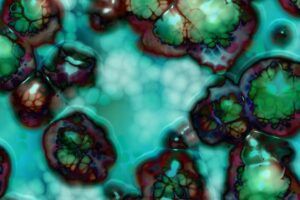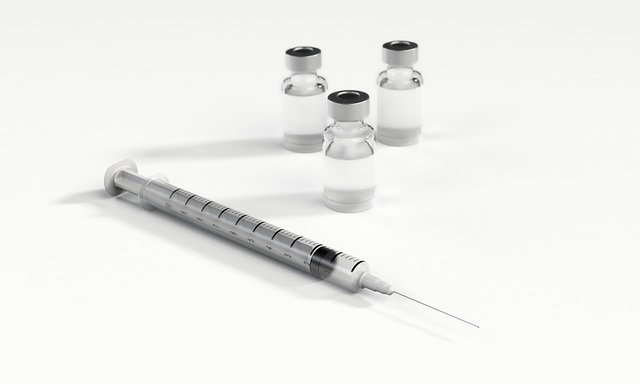Whenever we talk about vaccinations these days, people start to ask, What is in Dog Vaccinations? They mostly want to know What Dog Vaccinations Contain and understand how good or bad it can be for their pets.
Vaccinations play a major role in protecting dogs and other pets like cats from major infectious diseases. These diseases such as Viral and Bacterial diseases, can be fatal or cause significant diseases that are difficult to be treated or cured. Vaccination guidelines continue to evolve with researches, development and a better understanding of these diseases and how to fight them. On the current scientific understanding and knowledge of all the local diseases threats, a veterinarian working with pet owners to develop vaccination plans that suit the particular needs of individual dogs.
Pets are susceptible to many infectious diseases that can be fatal or have a serious effect and damage to their health and welfare.
Fortunately, Vaccines have been developed and been improved by the time to be safe, effective and high-quality vaccines to get rid of many of these diseases threats. As I mentioned in previous articles (Read Here), prevention is the key to protect our pets. Just as in human medicine, it is best to prevent, rather than to try to cure, whenever possible.
 Vaccines are the first defence line against diseases and the cornerstone of any preventative medicine approach to good health. You need to understand that the benefits of vaccines out weight the small risks associated with using it or using any medicine. The profound positive impact of vaccines is just amazing because they have been successful at controlling diseases and even preventing them from causing huge problems. Using vaccinations to protect our dogs or any pet, therefore, makes good sense and the benefits to both individual pets and their wider community are clearly evident when weighed against the alternative.
Vaccines are the first defence line against diseases and the cornerstone of any preventative medicine approach to good health. You need to understand that the benefits of vaccines out weight the small risks associated with using it or using any medicine. The profound positive impact of vaccines is just amazing because they have been successful at controlling diseases and even preventing them from causing huge problems. Using vaccinations to protect our dogs or any pet, therefore, makes good sense and the benefits to both individual pets and their wider community are clearly evident when weighed against the alternative.
Table of Contents
Vaccination – Veterinarians vs Pet Owners
As stated in Wikipedia, “Vaccination has become a controversial topic among veterinarians and dog owners. Specific adverse reactions and general consequences for long-term health and immunity are both being cited as reasons to reduce the frequency of pet vaccination.” Which make us think, why pet owners started to question vaccination? The problem mainly is not related to the function of the vaccine but to the source of vaccines which lead us to ask the same question again What is in Dog Vaccinations. Mostly it can be related to the ingredient of each vaccine.
Dangerous Dog Vaccine Ingredients?
Not long ago (around 40 years ago) the veterinary field had a misconception that the vaccines could be given continuously without harming the pets. By the time vets learned that vaccines last a lot longer than they thought, it can last more than a year and some of them can last for the pet’s life.
Recently, the dangers of vaccines have been brought to light, and pet owners started to ask questions. Some veterinarians are paying attention while others don’t and still use repeated vaccination. They either don’t believe or know of the research, or they’re protecting their income.

Whether you decide to allow your vet to decide how often your pet is vaccinated, or research vaccine safety and take an active role, here are 4 vaccine ingredients you should know and that will answer part of the question (What is in Dog Vaccinations?).
1- Aluminium
Aluminium the first ingredient that let us know What Dog Vaccinations Contain or might contain. Aluminium is the most common adjuvant in vaccines. It can be a reason for the degeneration of the brain and nervous system. It can also cause neurological dysfunction and problems. It promotes problems such as brain inflammation, disturbs calcium homeostasis, oxidative damage and reduces the levels of brain antioxidants (i.e., glutathione).
In the immature and developing brain as in puppies or in humans, it might lead to a number of neurodevelopmental conditions such as seizures. In the mature, especially in the ageing brain, these mechanisms can lead to progressive neurodegeneration, such as Alzheimer’s disease and ALS. Alzheimer’s disease is caused by plaque formation in the brain and chemical analysis shows an aluminium core at the root of each plaque. As for dogs, the damage can be profound.
Some researches like the one at UC Davis in California suggests around 39% of ageing dogs have at least one sign of dementia. The dogs had the same plaques as Alzheimer’s patients in humans. The Leading immunologist Hugh Fudenberg MD, says that humans who received 5 flu vaccinations between the year 1970 and 1980 are 10 times more likely to get Alzheimer’s Disease than those who had only 1 or 2 shots. Fudenberg attributes this to aluminium and mercury, which almost every flu vaccine contains. Note that, the gradual accumulation of aluminium and mercury in the brain can lead to cognitive dysfunction.
If you are interested to read and to learn more about how aluminium creates neurological disorders, read Dr Russell Blaylock’s recent contribution to Current Inorganic Chemistry.
2- Contaminants
Many of the adverse reactions we see in dogs caused by Contaminants that found in vaccines. Contaminants are not material or ingredient, it means anything that shouldn’t be there, That’s anything impure or unclean, is poisonous or toxic, or even the ability to cause disease. Vaccines can contain some contaminants that can cause cancer, autoimmune diseases, leukaemia and might cause other unwanted conditions.
On April 2010 in the Journal of Virology (Isolation of an Infectious Endogenous Retrovirus [RD-114] in a Proportion of Live Attenuated Vaccines for Pets, Journal of Virology, April 2010, p 3690-3694, Vol 84, No 7) an important scientific paper was published. In this scientific paper showed how 2 teams of scientists, one in Japan and the other in the UK, isolated a feline retrovirus called RD-114 in both feline and canine vaccines in the UK and Japan. Had other teams from other countries such as America or Germany also been looking, they would probably also have found the retrovirus.
The following are parts from a related paper appearing in Biologicals in 2010. “RD-114 was first isolated from a human tumour cell line (RD cells) derived from a human rhabdomyosarcoma after passage through fetal cats, and is thought to be xenotropic.”
That means they found this cat retrovirus in a highly malignant human tumour. “Xenotropic” means that it will be harmless in the original host species, but will cause problems (like tumours) in a different species.
The author Catherine O’Driscoll in her article on Vaccine Contaminants in the January 2013 issue of Dogs Naturally Magazine, continues, “One of the authors of this paper wrote to me privately: “If the ERV induces diseases in vaccinated animals and humans, it will take more than five years (in animals) to ten years (in humans) when the first patient appears. But it will take additional time to relate some diseases with specific vaccines because expected diseases are very common (such as cancers, lymphoma and autoimmune diseases). If so, when we are aware of the real risk of ERVs, it is too late because millions are infected with the viruses by the contaminated vaccines.”
3- Protein (Animal Source)
“Our ongoing studies of dogs show that following routine vaccination, there is a significant level of antibodies dogs produce against their own tissues…Some of these antibodies have been shown to target the thyroid gland, the connective tissue such as that found in the valves of the heart, red blood cells, DNA etc.” Larry Glickman DVM, referring to the results of the Purdue Vaccine Studies. If you want to read more about The Purdue Vaccination Studies And Auto-Antibodies (Click Here).
The microorganisms are often cultured on animal tissue like embryonic chickens. When they manufactured the vaccine, it is almost impossible to divide the wanted organism (virus or bacteria) from the unwanted animal tissue. It all gets mixed together and injected later into your dog’s body.
To make it simple, if your dog, for example, eats animal flesh it will be digested into simple amino acids before entering the bloodstream. The digestive system and process in most cases change the protein molecules so they won’t trigger the immune system to cause any kind of reaction. But when the unwanted animal tissues “foreign protein” injected into the bloodstream directly in case of vaccines it will cause such troubles.
The response from the immune system will be normal against any foreign body, in our case foreign proteins. It will start by activating the killer cells and sent them out to consume the cells which contain those foreign proteins and the fragments. This process is the natural reaction from the body to protect it from any overwhelming foreign body attack invading the body ( like viruses and bacteria). As the body is busy cleaning up the viruses that have just been injected “vaccines” along with other harmful materials including Thimerosal, aluminium, formaldehyde and more, the foreign protein fragments are not always destroyed by it.
So the foreign protein gets absorbed into body cells. T-Cells, start to sense that they are there, but they are unable to reach them directly and then start to attack the body cells that harbour them. This can lead to what we call “autoimmune disorders” such as allergies, cancer, arthritis, etc.
4- Thimerosal
This ingredient is mercury-based additive has been used as a preservative for a long time, it is known for decades how mercury and Thimerosal are extreme neurotoxic for the body.
The creator of Thimerosal Eli Lilly was contacted in 1935 by vaccine manufacturer (Pittman Moore) after they declared that Thimerosal is safe, Pittman Moore wrote to them: “We have obtained a marked local reaction in about 50% of the dogs injected with serum containing dilutions of Merthiolate (Thimerosal). Merthioiate is unsatisfactory as a preservative for serum intended for use on dogs.” (Director of Biological Services, Pittman-Moore Company, letter to Dr Jamieson of Eli Lilly Company dated 1935. U.S. Congressional Record, May 21, 2003, E1018, page 9).
Since then, many studies showed the danger of Thimerosal, as in a study in 1967 which found mice killed by Thimerosal when it has been added to vaccines. After several years around 1972, Eli Lilly found Thimerosal to be toxic to tissue cells in low concentrations as one part per million, which is 100 times weaker than in a typical vaccine.
The FDA proposed in 1982 a ban on products containing Thimerosal. In 1991, the FDA considered banning the ingredient itself from animal vaccines.
Finally, after 15 years in 2006, some researchers at UC Davis published a study that connects Thimerosal with disruptions in antigen cells knows as dendritic cells obtained from mice. The study indicated that Thimerosal not only a direct neurotoxic but it may also be immunotoxic.
Is Thimerosal necessary for vaccines?
As a matter of fact, Thimerosal is not important for vaccines at all, it’s the only job is to allow vaccine manufacturers to package vaccines in multi-dose vials. That means less cost for them. What Dog Vaccinations Contain, Thimerosal might be one of the contents of the dog vaccinations, but again why! Unfortunately, Some vaccines still contain Thimerosal till this day. To read more (https://www.cdc.gov/vaccines/vac-gen/additives.htm)
The No-No Vaccines
Generally, these vaccines are not recommended include:
- canine adenovirus-1 (which causes a significant reaction).
- Giardia vaccine.
- Canine coronavirus.
- Rattlesnake envenomation vaccine.
CANINE VACCINATION GUIDELINES
 It is important to know the CANINE VACCINATION GUIDELINES to avoid any confusion and misuse of vaccination. There are two sets of canine vaccination guidelines available:
It is important to know the CANINE VACCINATION GUIDELINES to avoid any confusion and misuse of vaccination. There are two sets of canine vaccination guidelines available:
#1 those produced by the American Animal Hospital Association.
#2 those from the WSAVA Vaccination Guidelines Group (VGG).
The fundamental principle of both sets of guidelines, as encapsulated by the VGG, is that “we should aim to vaccinate every animal with core vaccines and to vaccinate each individual less frequently by only giving non-core vaccines that are necessary for that animal”. To read more (Click Here). In order to apply these principles of vaccination guidelines, it is necessary to understand the definitions of ‘core’ and ‘non-core’ vaccines.
Let Us Break it Down
After we answered most of the part about the question of What is in Dog Vaccinations and came to a conclusion What Dog Vaccinations Contain or might contain, I believe everyone must come to their own conclusions and make their own decision. Vaccines, in my opinion, the best way to protect our pets from fatal diseases but that doesn’t mean I will take blindly before doing a small research about things like its ingredients. Here in fluffy health, is my job to pass the information I’ve researched and learned to you. But it is your job to think about it and then do your own research and be well-informed. Remember it is your job to advocate for your pet with full knowledge of the possible risks and consequences.
Posts that may interest you:
What is the rabies virus – The Relation Between Rabies and Dogs
What is dog Vaccinations? – What is in dog Vaccinations? Is it Important?
Common Diseases in Dogs – Between Knowledge and Prevention
AstroSmart ™ Review – Brain Health Supplements to Support Dogs Mental Health
HomeoAnimal Review – Natural Remedies for Pets
Today’s funny quote:
Cats have 32 muscles in each ear, to help them ignore you.
Mohammad
Founder of Fluffy Health & Life


it is important to know the content inside vaccines to avoid serious problems that might affect our pets. I was searching for this topic to understand and know more information about vaccines.
I agree, vaccinations are important in our lives and our pets live. But we need to be careful and always check everything inside it.
I had no idea of the dangers of the ingredients in some of the vaccinations. That is really alarming and if you care anything about your animal you really have to think it through before making a decision.
I do believe vaccinations are important and necessary to prevent/control diseases etc but now that I read this article, I will be a bit more careful and do my research before I blindly just agree to a vaccination.
Thanks for sharing such an informative article. It definitely enlightened me today on this topic.
vaccinations are important and necessary to prevent diseases and infections. However, we need to be careful and search before we give our pet’s vaccines. I am glad you found it informative and helpful.
Thank you for such an eye opening article on dog vaccines. I had no idea that such toxic ingredients can be included. Even more alarming that flu vaccinations contain them. I don’t have a dog, but always get my cat vaccinated every year. I will continue to do so as I feel the benefits greatly outweigh the risks.
That’s the pretty part of doing small research about anything before we give it to our pets. It makes us see things we didn’t see it or know it before.
Vaccinations are awesome and needed for every pet, but we need to be careful especially because there are so many brands around the world nowadays.
An informative article on what dog immunizations could possibly contain.
My puppy received her Lyme immunization back in November and her Comprehensive Exam blood work showed that she was positive for Lyme. Turns out that the immunization did not work as it should.
The manufacturer covered all of Miss Diva’s lab work and the month of medicine that she needed to take.
Thankfully it was caught in early stage and the fact that she was a puppy, was also a big help.
For her, life continues on with her chasing rabbits and playing with her toys outside.
Such is the life of a pup 🙂
Vaccinations can be an awesome way to protect our dogs, but sometimes we can find some ineffective ones for who knows why! I am glad it was caught in early-stage and your puppy is okay now! I wish you both a healthy and happy life.
Hi,
This is a very well researched article. I believe that pet vaccinations are extremely important, especially if you live in areas where there are many dog/cat diseases on the streets … Where I live, distemper and parvo are big problems, and I have seen puppies die terrible deaths, simply because their owners never dewormed them … If they didn’t even deworm them, they wouldn’t even vaccinate them … Those puppies came from very bad neighbourhoods when I volunteered in animal rescue. Many other puppies and older dogs too also died of parvo and distemper, simply because they had not been vaccinated and didn’t have any defences against those diseases.
While I am wary of vaccinations, I read your article with great interest, because I want to know more about it. I am very allergic to certain vaccine components. When I was a baby they had to stop vaccinating me because I had strong allergic reactions. Some vaccinations have given me really bad reactions and it gets worse with the years, so I am very afraid of going through that again …
After reading your article though, I wonder if my allergic reactions could have been to mercury and aluminium … I am also allergic to chemicals, so I am just wondering about that …
I also have a question about the rattlesnake envenomation vaccine, why is it a no no? I’m just asking because rattlesnakes live in my area.
I am sorry to hear that there are animals in your area suffering and I thank you for trying your best to help as many of them as you can! Vaccinations are important in humans and pets life and that’s why scientists keep researching and putting so much efforts to give us up to date vaccines and safe ones! Hopefully, soon enough we can have great ones to protect us and pets from very dangerous diseases like cancers or RABIES VIRUS.
As for your question, mostly because there is no study confirmed its effectiveness yet or not enough studies about that. However, your vet might give it to your dog hoping it will protect the dog especially if in areas like yours have rattlesnakes there. But in other areas, it’s not recommended to take it. I will do more research on this and write about it in details soon.
Hi. A great article and informative, and it is very annoying to read about dangerous content in vaccines. I advise you to write more about this area and publish more articles and thank you.
Hello,
I am glad you found it informative, it is annoying when we know such harmful ingredient exist in vaccines, information meant to make us avoid them to give our pets a healthy life. I hope you enjoy reading more of the articles here, There is a post about vaccination, I encourage you to read it.
This is a very thorough discussion on the problem ingredients in dog vaccines. It makes me realize how important doing our vigilant research on what our dogs are being prescribed, why, and whether there are opposing views in the vet world. As you pointed out above, some vets are aware of not needing to give some vaccines too often, while others don’t seem to take this into account. I know vaccines are important, but I would prefer that they did not contain the above ingredients if possible. I’m glad people have started questioning what’s in them to bring more attention to them and ensure the industry improves what’s included for the health of our furbabies. Thanks for sharing.
Vaccination without a doubt the best method to protect our pets and even us humans from really dangerous diseases, but that doesn’t mean we give 100% faith in different brands without at least reading what’s in it! People started to question such things but I am afraid they will affect other people to decide not to give their pets’ vaccines which the opposite of what we want!
I am glad that you enjoyed this article and found it helpful!